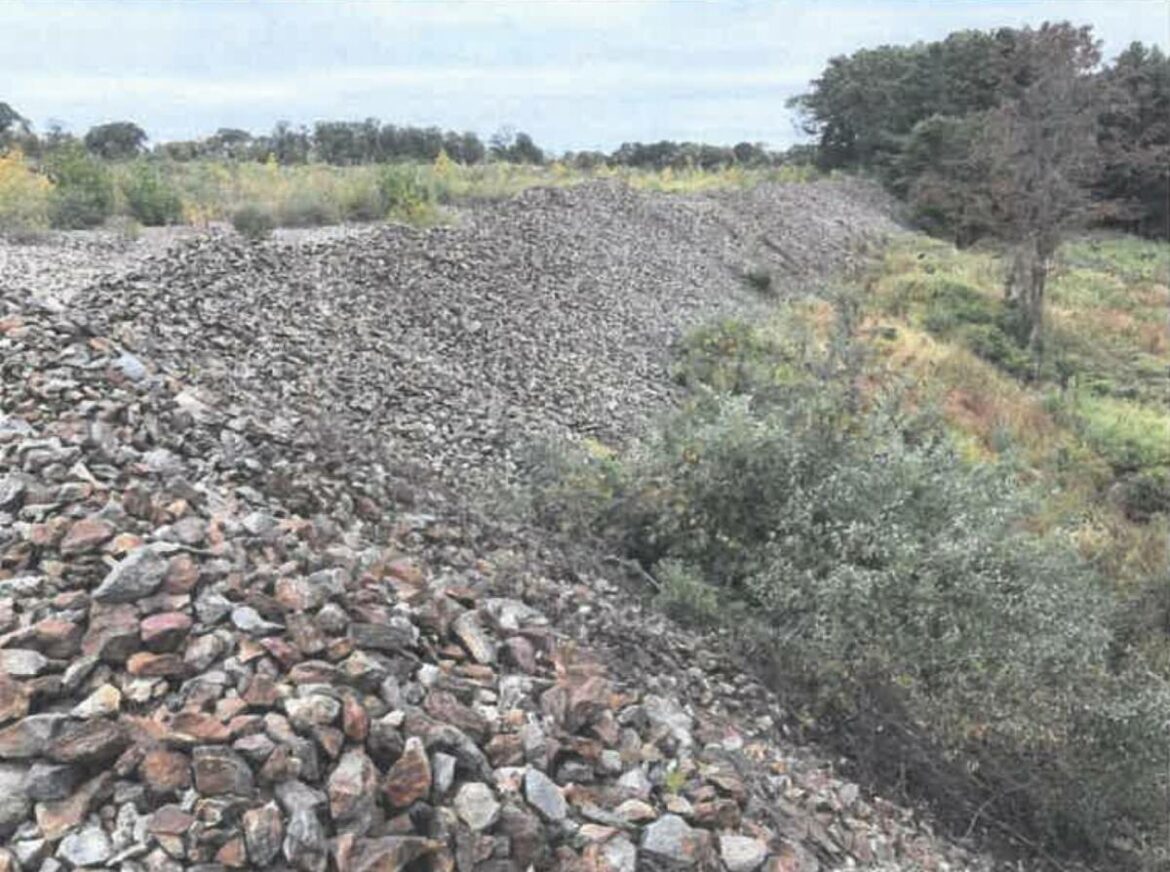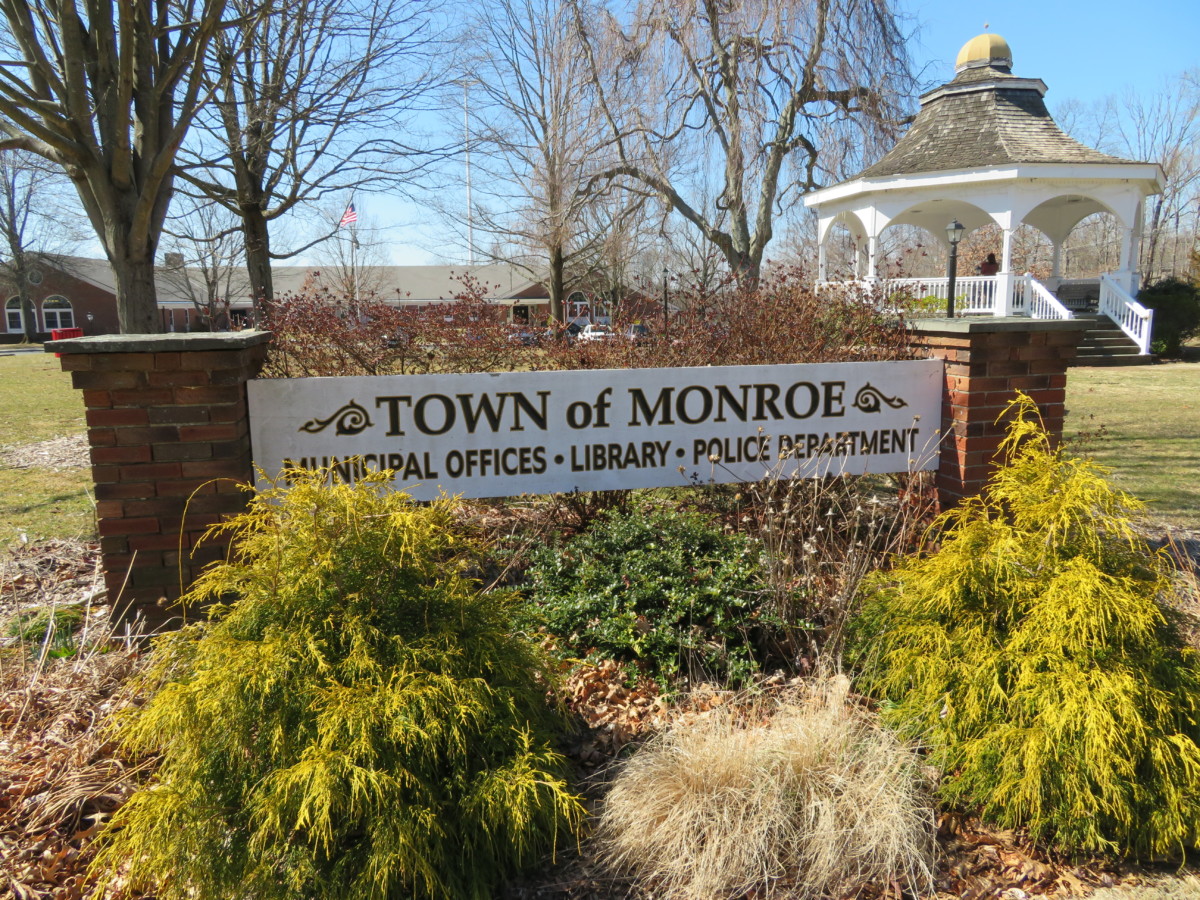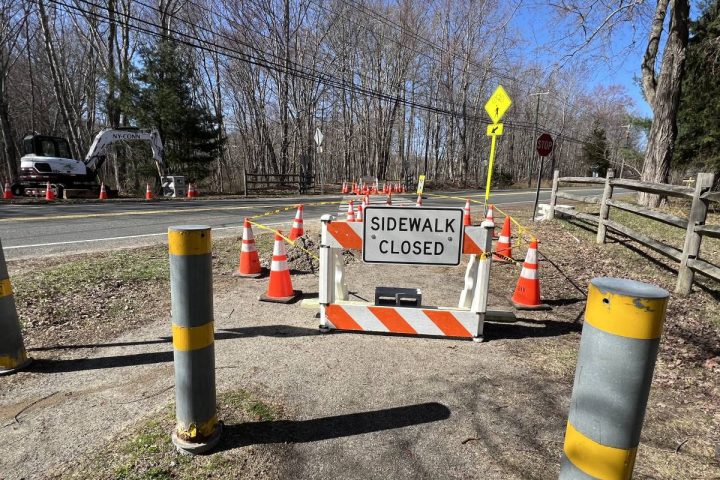MONROE, CT — An application for 99 homes to be built on more than 150 acres at 139, 141, and 201 Turkey Roost Road and 30 Cobblers Hill Court cleared its first hurdle this week when it won the approval of the Inland Wetlands Commission.
The application now will go before the Planning and Zoning Commission,, who by law can’t act on an application until it is approved by the wetlands commission. But the zoning commission has already heard from residents opposed to the development, said Bill Holsworth, the town’s director of economic and community development.
A year ago, Quarry Ridge Associates LLC , owned by David Bienashski, initially intended to construct 90 homes on 106 acres but expanded that to build 99 single-family homes on the 153.65 acres, 81 of which will be preserved as open space, up from the originally proposed 58 acres and comprising 55% of the land. The development’s homeowners association would own and maintain the open space.
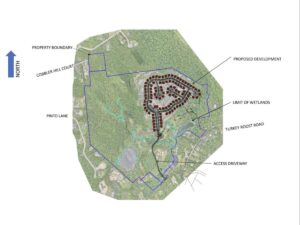
The amount of open space is achieved by clustering the homes in one section of the property. ‘The preservation of open space is considered one of the most effective practices for long term protection of inland wetlands,” the application says.
The property is zoned multi-family and RF-2 and consists of 11 acres at 139 Turkey Roost Road; 6.3 acres at 141 Turkey Roost Road; 99.98 acres at 201 Turkey Roost Road and 36.4 acres at 30 Cobblers Court.
Almost 16 acres of the site are wetlands but there’s no construction planned on that part of the property so there is no direct wetland impact. A previous development plan for the site was approved in 2010 for active adult housing but never built.
For years, dating back to the 1940s, the property, owned by the Renz family, operated as a gravel pit, selling top soil and other construction materials. As time went by and the surrounding land was developed into single-family homes, neighbors began complaining about the operation and the town made multiple attempts to shut it down. The property was sold in 2003 and the property was remediated in preparation for development, but the Great Recession of 2008 derailed those plans.
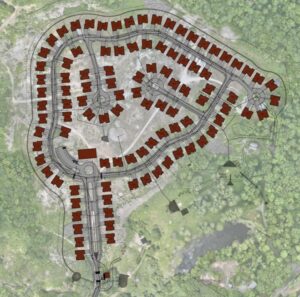
“Over the past 20 years the owner (Bienashski) has paid in excess of $2 million in property taxes and has been provided no services in return,” the application states.. “He has spent thousands more in design costs and legal fees to prepare a design that presents no impact to the wetlands, provides enormous amounts of open space and, if approved, will provide an estimated $1,188,000 – $1,485,000 in annual tax revenue to the town.
“At this point the owner must somehow recoup at least a portion of this huge investment. What is proposed would be in harmony with the singe family housing character that Monroe offers,” it says. “The alternatives would require an approval path that limits the input and control the town and its residents would have over the development.”
Those alternatives include filing the application under state statue 8-30g, the affordable housing statute that gives developer a wide berth is a percentage of the units are deed restricted as affordable under the statute’s guidelines. Applications filed under the statute and denied by local land use boards can appeal those denial and the burden of proof falls on the municipality to show the development poses a threat to public health and safety. In general, those appeals are almost always successful and the development then goes forward with limited municipal input.
David Bjorklund, a civil engineer with J. Edwards & Associates, told Inland Wetlands commissioners in September that the gravel pit activity destroyed the property, with the constant hammering of heavy equipment and the dump truck traffic entering and exiting the site for decades. Gaping holes were left in the landscape where rocks, topsoil and fill were removed and sold. It will take much effort to get the site prepared for development, he told the commission.
A 24-foot road would be constructed to serve the development with underground utilities. Trees and one existing home will be taken down to make way for the construction, according to the application. The homes will be served by municipal water coming from Fan Hill Road and there will be no wells drilled. An on-site wastwater treatment plant, already approved by the state Department of Energy and Environmental Protection, would process the sewage the development produces.
All respectful comments with the commenter’s first and last name are welcome.

